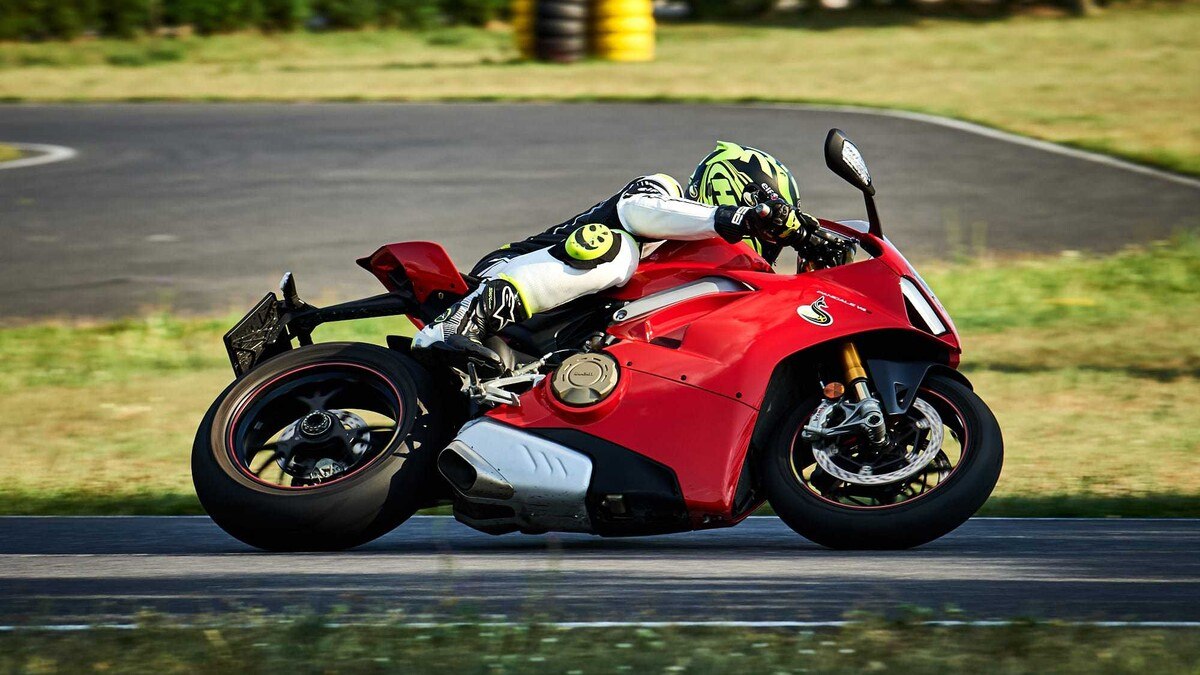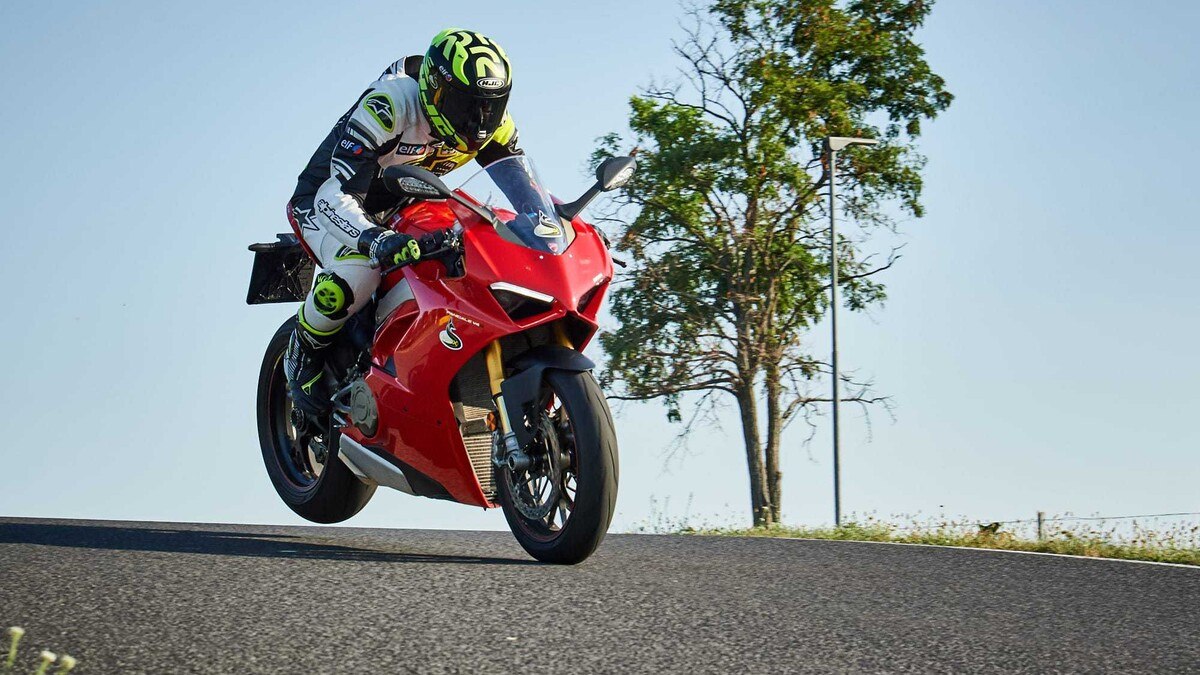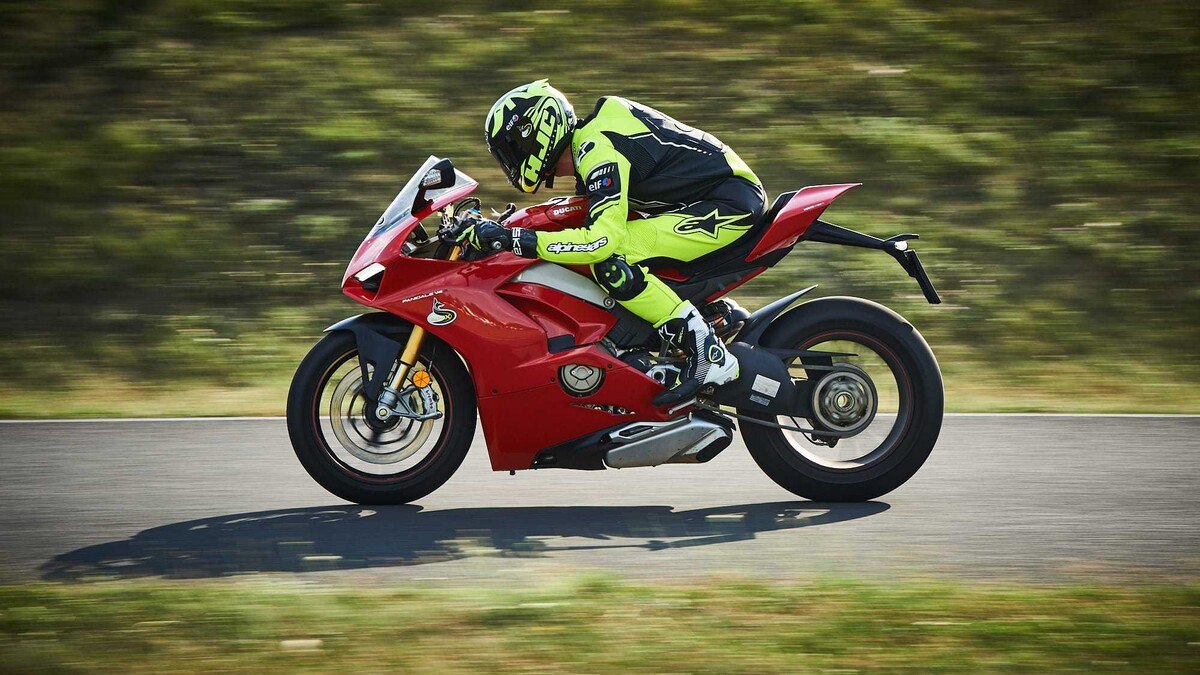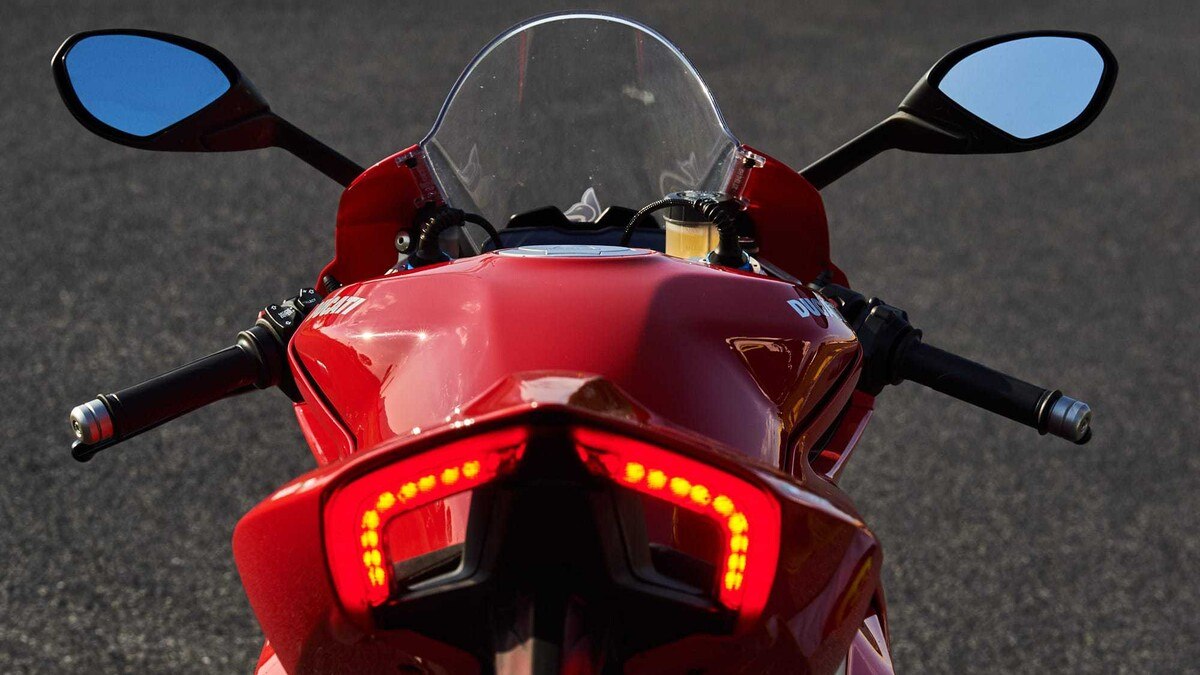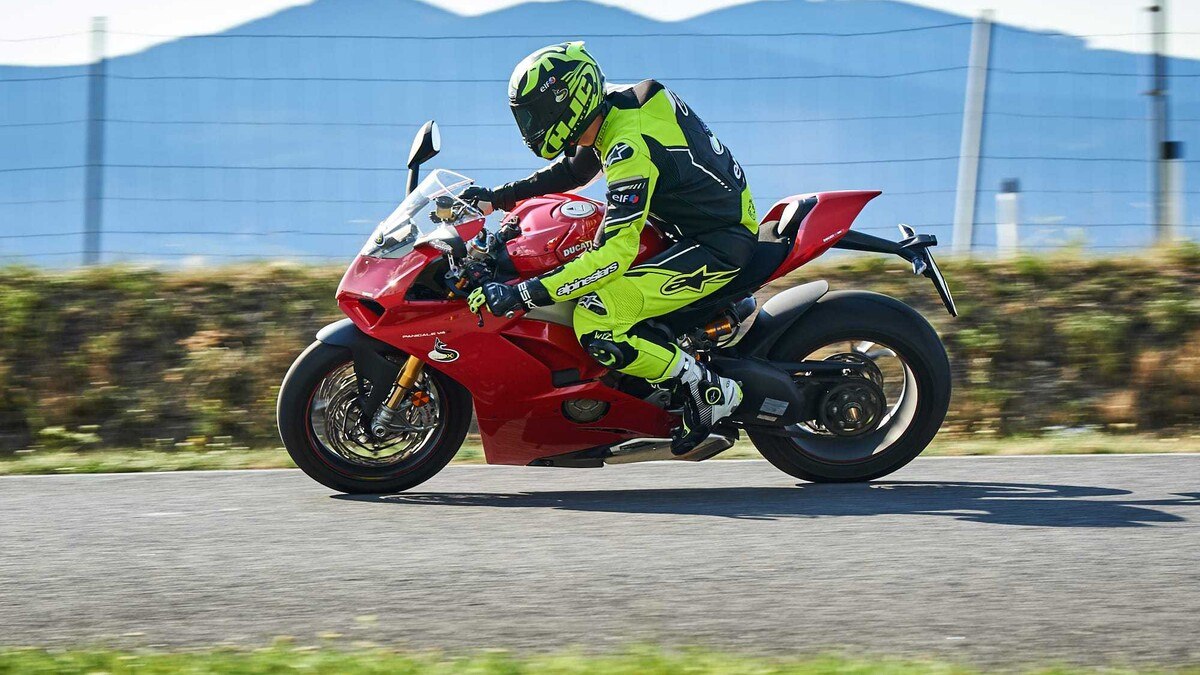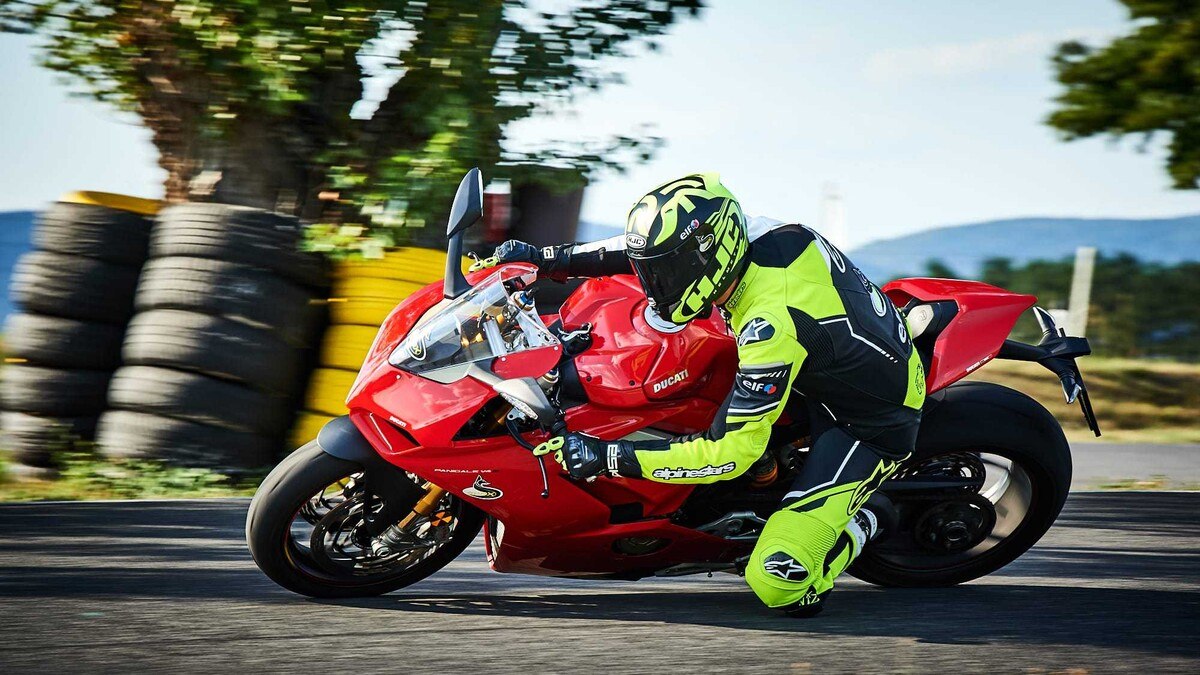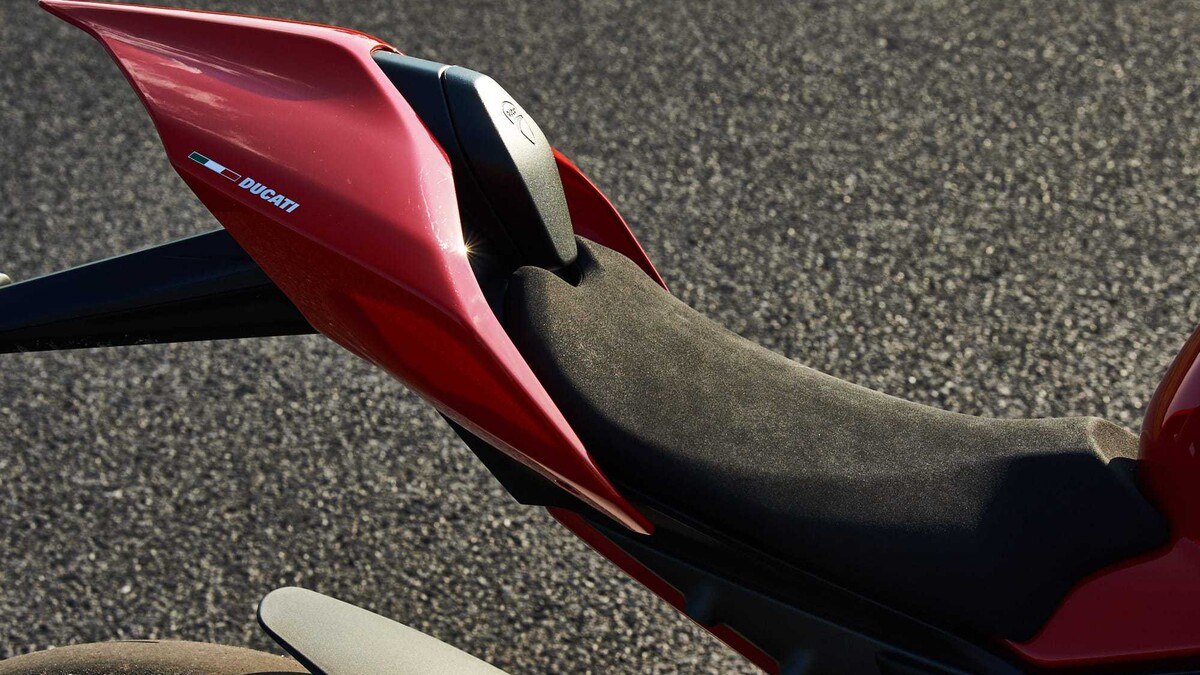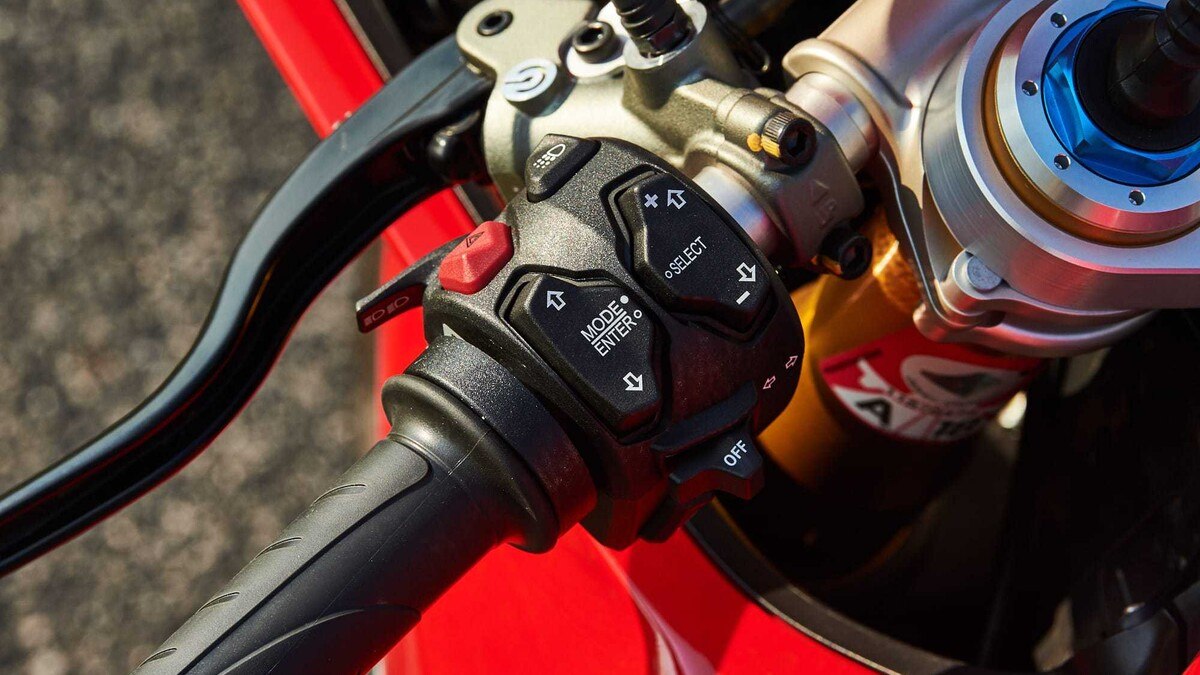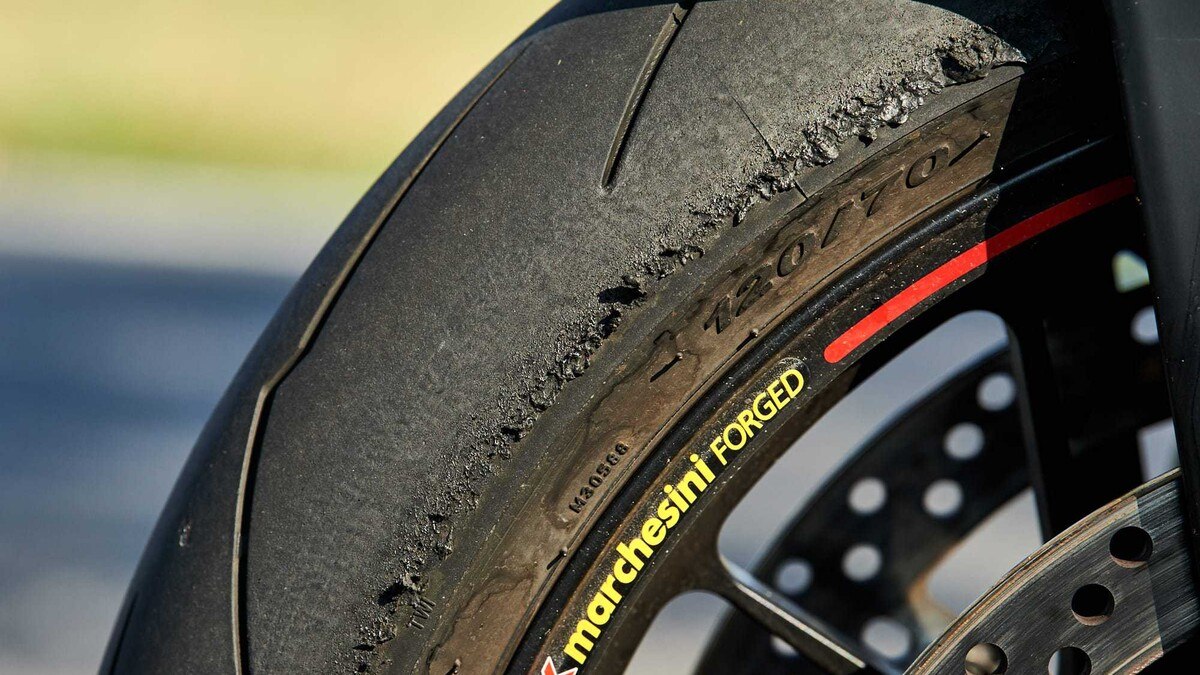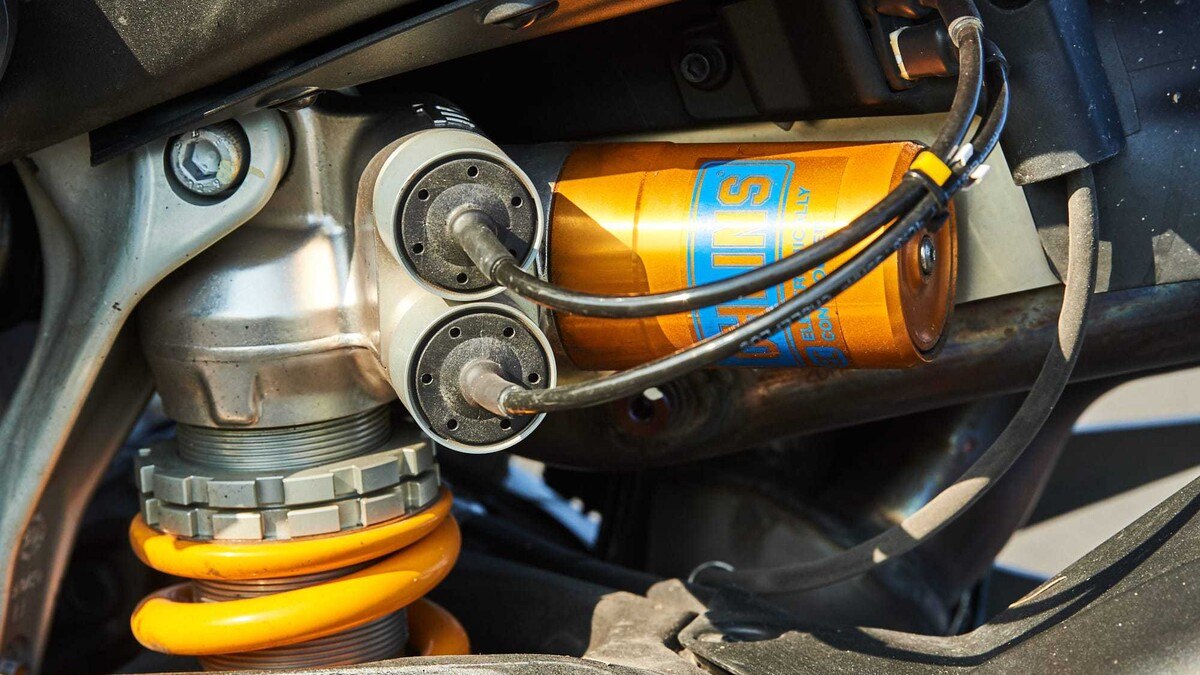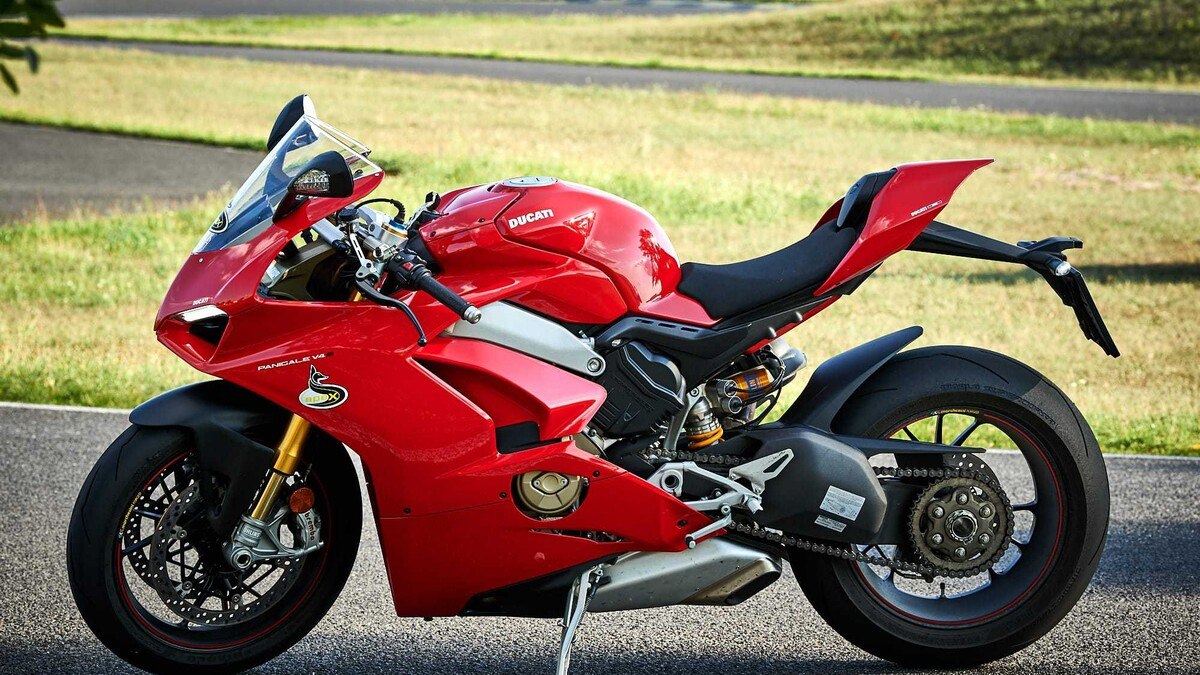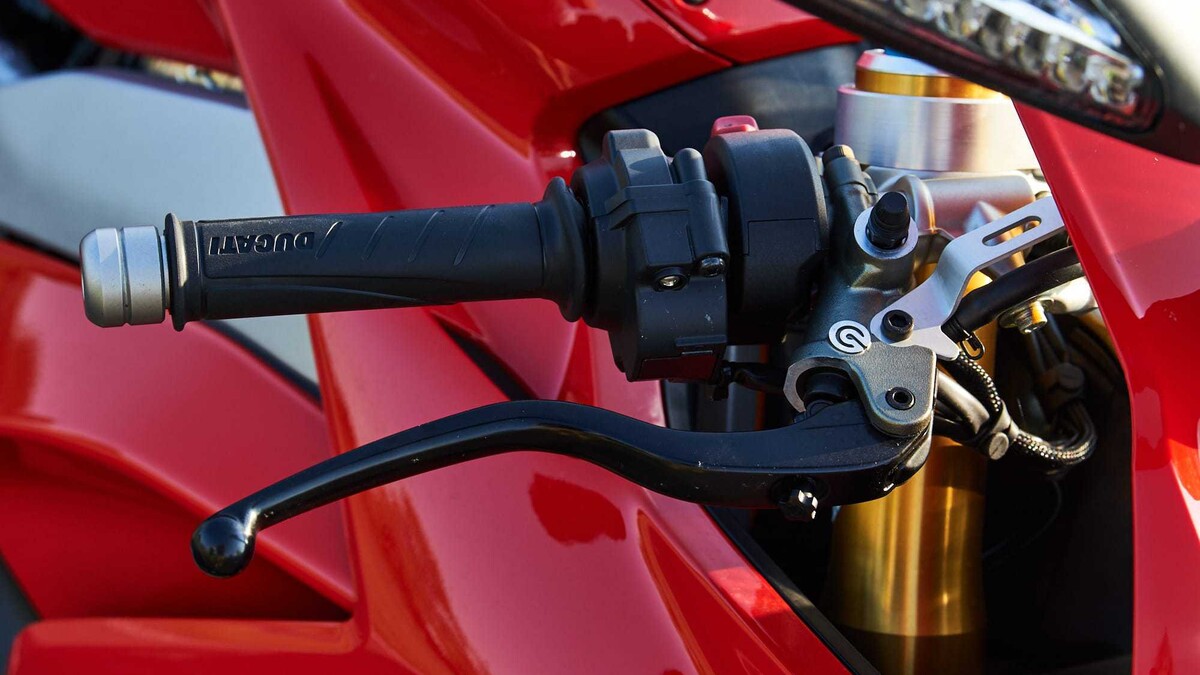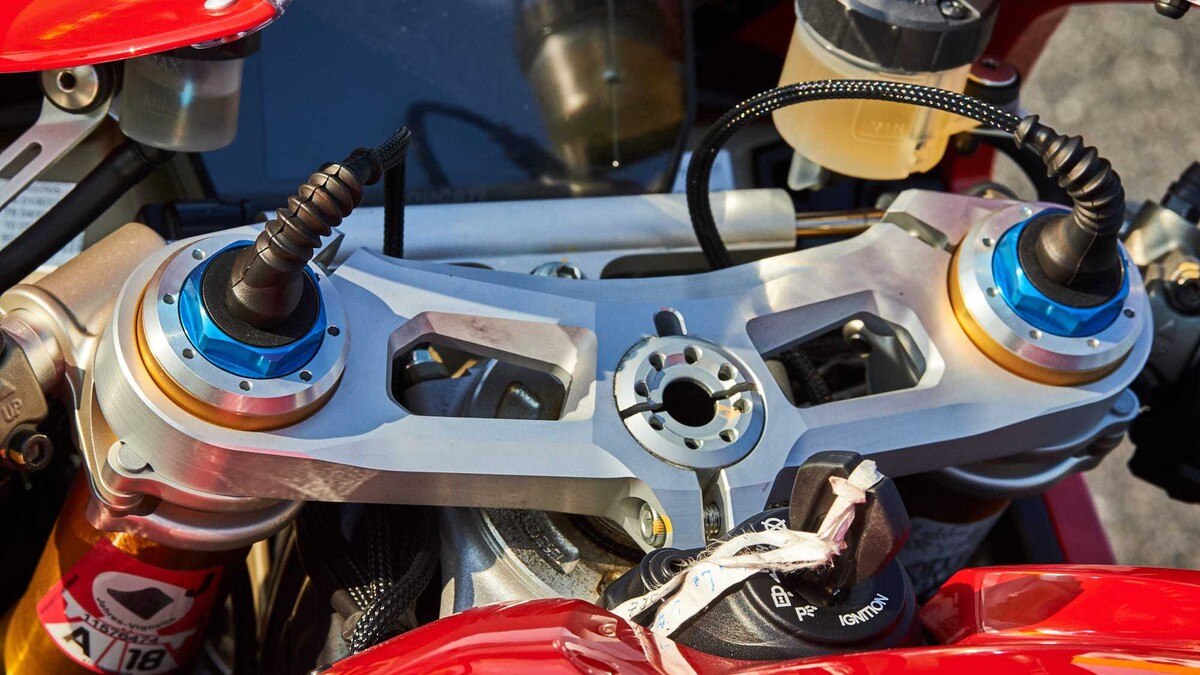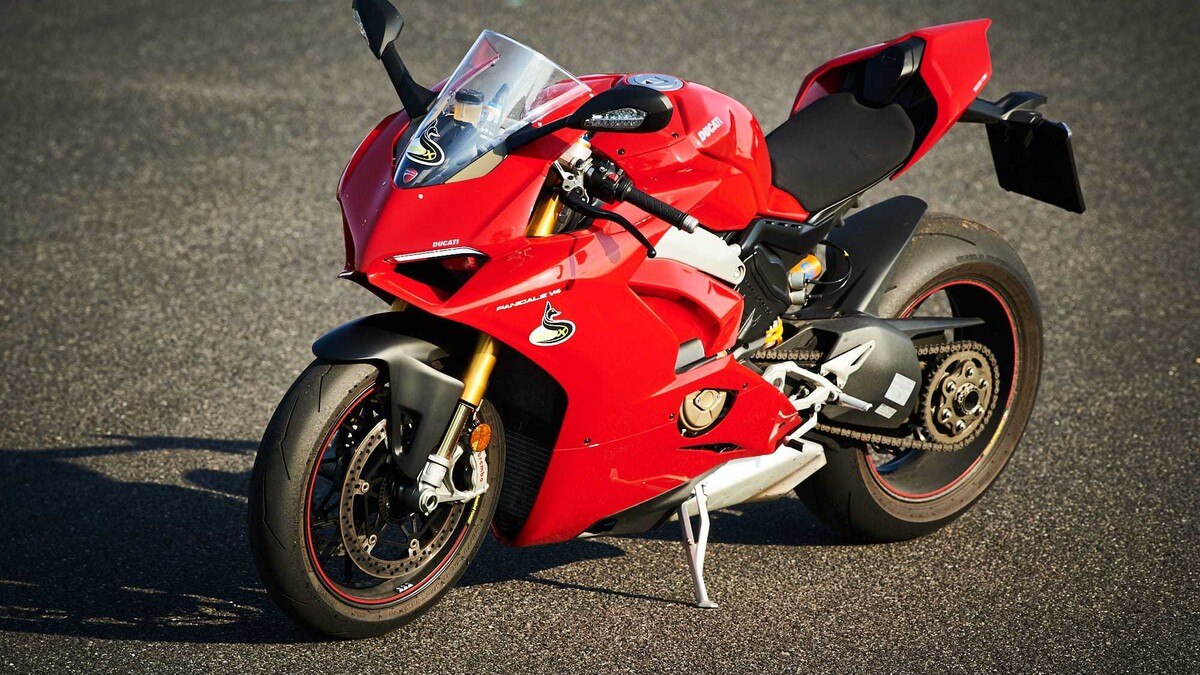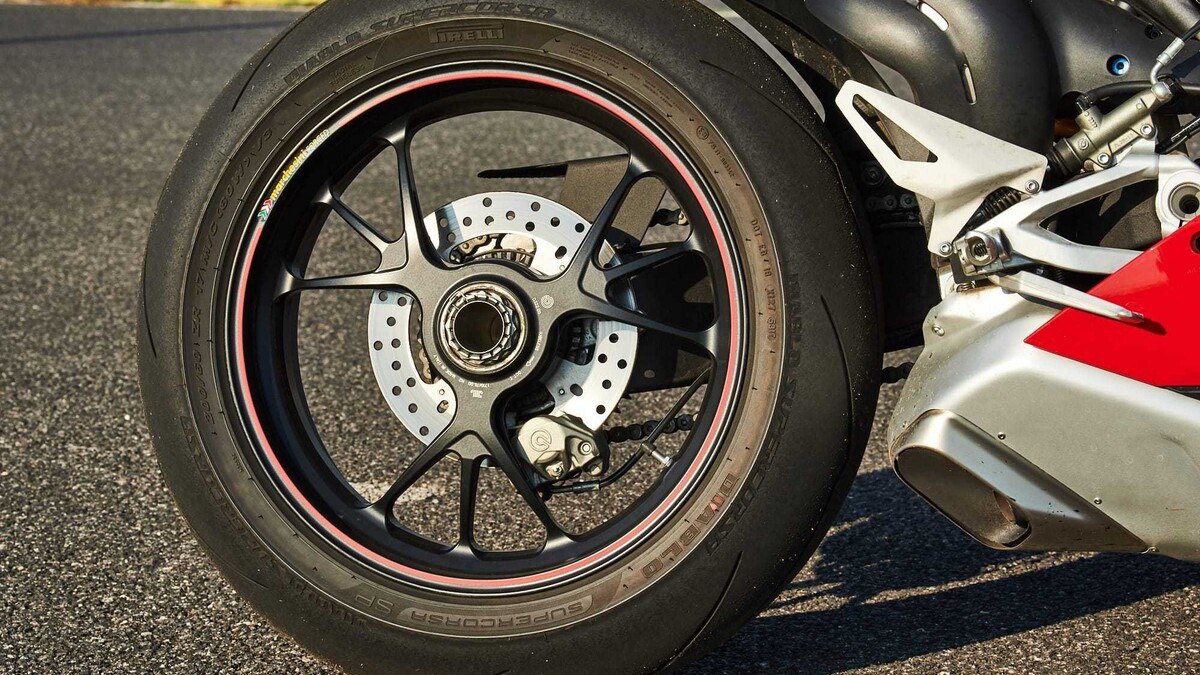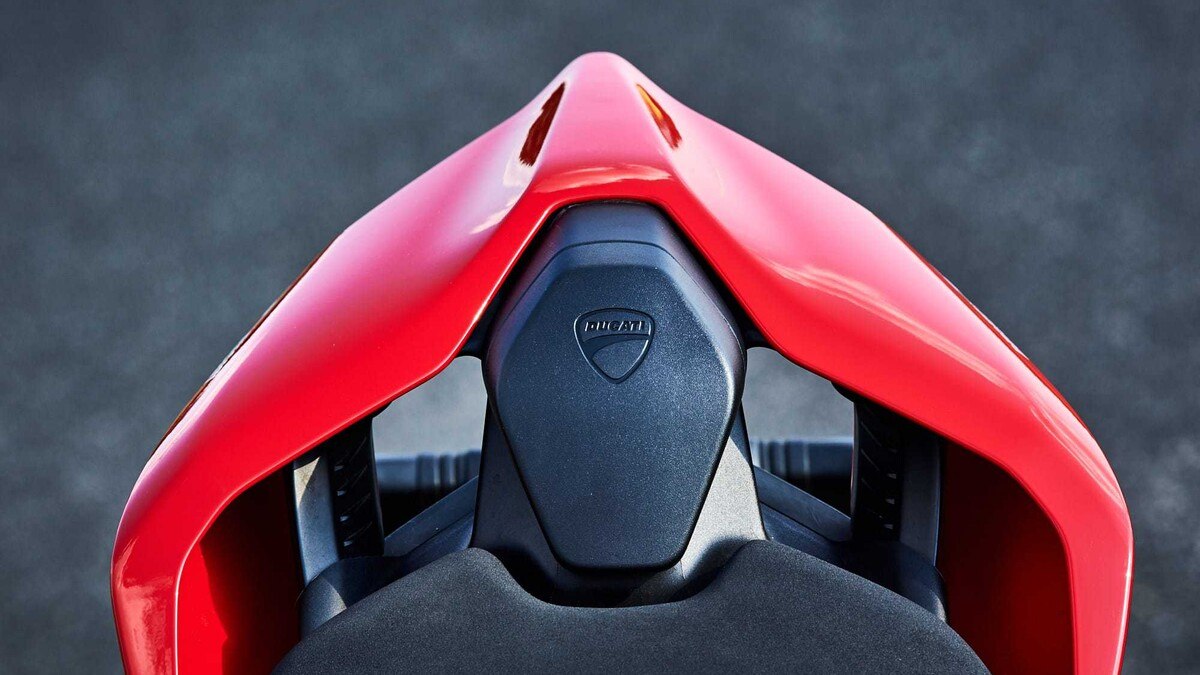Test Ducati Panigale V4 S - motorcycling completely new
The Ducati Panigale V4 S is not only the beginning of a new era for the Italian brand, it completely redefines motorcycling with its electronic helpers.
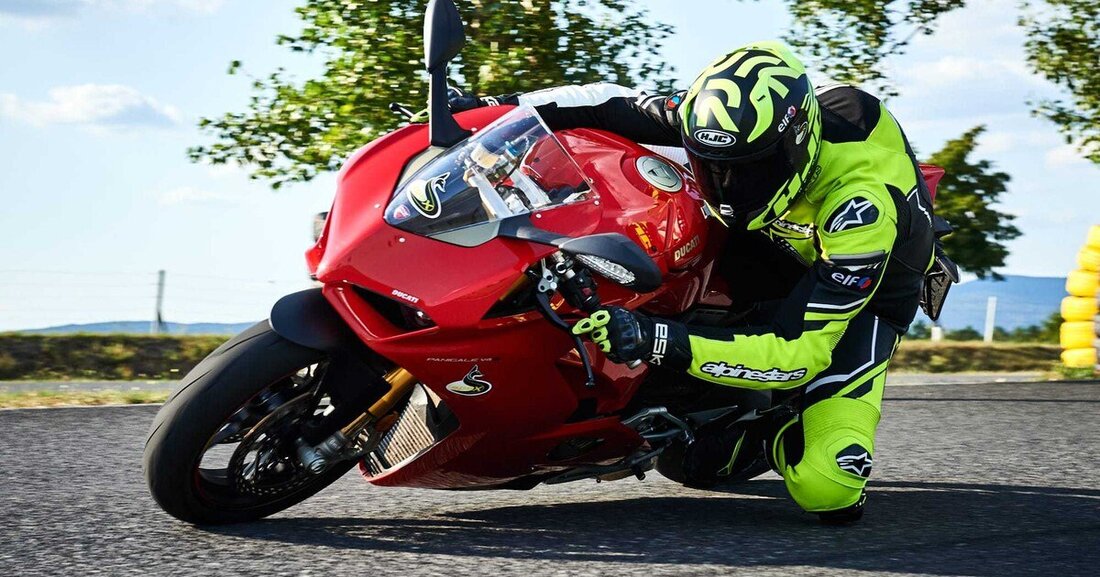
Test Ducati Panigale V4 S - motorcycling completely new
ergonomics
Actually, super athletes are ergonomically far too difficult for me. The great feeling on the front wheel comes at the price of an exhausting, forward-stretched seating position. Great for a few turns on the ring, occasionally also for the home route, but in everyday life it's hell. In this respect, I'm surprised that the Panigal V4 S isn't that horrible to sit on. The stubs are wider than expected, the seat cushion is very tight but not a board. The knee fit is great and the mobility on the bike is good. In alternating curves you quickly move from one side to the other. Nevertheless, you have a lot of weight on your wrists and the wind protection is not too big because the entire cockpit is extremely compact. The footrest position is impeccable and sporty. The side stand is a bad design, as the pin to fold it out can hardly be reached with the left foot. I always had to fold out the side stand with my left hand.
Handling
Ducati's Supersport models were never handling miracles. The Panigale V4 continues the tradition, but is more light-footed and more docile at corner entry than expected. This is certainly also due to the radically agile Pirelli Supercorsa rubber. Nevertheless, it takes some physical effort and pressure on the handlebars to put the V4 down. It's a little easier if you push the Italians on the accelerator into the radius at speeds over 4500 rpm. Once put down, the well-known Ducati stability appears. You circle the red Panigale through the curves with extreme precision. Corrections are possible, but require clear impulses. The feedback from the front is very good, the rear wheel communicates with the rider almost even better. If you apply the gas too forcefully and the rear rubber moves slightly towards the exit of the curve, you can feel it crystal clear in the popometer. So clear that you're quickly tempted to do a few powerslides. However, before the rear starts to wedge out, the electronics take control. More on that later. The Panigal V4's territory is curves between 80 km/h and top speed. There it can show off its full chassis strength.
Engine / transmission / electronics
The highlight of the Paniga V4 S is already in the name: it is the completely newly developed four-cylinder engine in a V-design. With counter-rotating crankshaft. This is intended to promote handling. The same concept as you know from the MotoGP bike. The design combines the advantages of four and two cylinders: massive torque and high peak performance. From 1103 cubic meters, the beast produces 214 hp and 124 Newton meters of torque. Values that are much more brutal than they read. You have to experience the power of the engine in order to be able to classify it. An attempt: No matter how sporty you drive, no matter how courageous you are with the throttle grip, you can completely rev up the V4. From the very first start, the machine pushes forward so powerfully that you want to shift up. You're only in the first third of the speed. Things get bad from the middle. A small twist on the throttle and the Panigale rushes forward and the numbers on the fully digital color display jump in increments of ten, where individual km/h would otherwise be counted. If you turn the throttle grip numbly from mid-speed onwards, the control electronics are constantly in use. The power of the Panigale V4 is the beginning of a new motorcycle era. I claim: Without electronic helpers, the motorcycle cannot be tamed by an average biker. In addition, the quickshifter with blip - for clutchless up and downshifts - works great. The somewhat rough throttle response below 3500 rpm is a bit unpleasant. The V4 is a super sports motorcycle and not a touring steamer. You can also notice it in the engine characteristics. Actually, I could rave about the engine's steam for much longer, but that alone isn't even the highlight of the Panigale V4 S. The real trump card is the electronics that make the V4 drivable. Especially the traction control. I've never been a fan of traction controls because I generally find it difficult to trust them. And for me, most of them so far have been too rough and too aggressive during the procedure. But with the Ducati Panigale V4 I had the moment of enlightenment. I drive very motivated over my home route. At the apex of a tight 160-degree curve, I deliberately turn the throttle hard to feel the traction control. Suddenly the traction control light on the dashboard flashes, but the power is still on. The front wheel lifts slightly off the ground and I only curve out of the curve using the rear wheel. Just like you sometimes see in best-of compilations of MotoGP and Superbike legends on YouTube. Everything was done by electronics. And so relaxed that I didn't feel any loss of performance. I'm so excited that I'll try it again in the next corner. And it works again. Craziness. Spectacular. A dream. I feel like Garry McCoy. Just without smoke from the rear tire. To put it briefly: I have never ridden a motorcycle where the driving aids intervened so sophisticatedly and sensitively. A big compliment to Ducati: it was done cleanly.
Undercarriage
The Panigale V4 S offers a fully electronic Öhlins chassis. Pretty much everything about the chassis can be adjusted via the dashboard. I admit: it was too difficult for me. I drove in Sport, Normal and Race mode. The spring elements have more than impressed me every time. The V4 S is not a sedan chair, the chassis is always rather tight to very tight. Nevertheless, uneven floors are dampened very sensitively. But always noticeable, just not negatively. You can feel the manhole cover, the asphalt edge, the tar strip, but the Panigale always stays on course and doesn't wobble. Even during hard braking maneuvers, the athlete does not dive away undamped, but rather offers a lot of feedback until the rear wheel is lifted slightly. The chassis is so good as standard that I couldn't even reach the limits in the test. Before the Panigale wobbled or became imprecise, my courage on the brakes or at the apex of the curve was too low. I say here wholeheartedly: you can't really push them to their limits on the street. On the racing circuit, yes, but then you're already driving at a semi-professional level and collecting tons of trophies in hobby cups.
Brakes
Ducati and Brembo have been partners for decades and with the Panigale you can just tell that it works like a dream. Although the latest Brembo monoblock brake calipers are installed, the front brake is not overly toxic, but can simply be dosed precisely and with crystal clarity. Great feedback on the brake lever. Nevertheless, the delay is extreme. Anyone who dares to pull the lever hard will bring the V4 to a standstill in no time. And if the ABS intervenes, it doesn't matter at all, because the control intervals are kept very short. The rear wheel brake is not quite as easy to control, but it decelerates well and much better than on some previous models. Overall, the brakes are at racer level. You could choose slightly more snappy rubbers for the race track, that's all you need to outdo the competition at the entrance to the curve.
Noticed
How extremely compact the entire motorcycle is and how incredibly powerful the engine is. The sound is correct, but could be a little bassier. And: There are far too many technical details to list and explain them all here.
Failed
The side stand that cannot be folded out with the foot. How quickly the Panigale V4 S sends temperature warnings to the cockpit in midsummer.
Test result Ducati Panigale V4 S, by p.bednar
More information about Ducati Panigale V4 S
With kind support from TOTAL Austria
More action photos from the test drives can be found on Instagram: apex_moto_at
Or follow us on Facebook: Apex Moto

 Suche
Suche
 Mein Konto
Mein Konto
